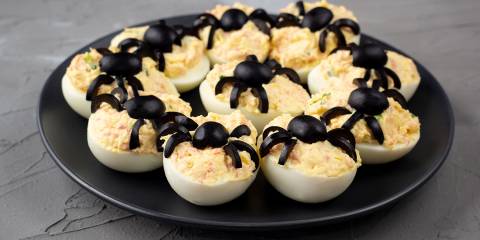The last few weeks of summer break are bittersweet—the sadness of letting go of both the craziness and laziness that summer creates, along with the excitement of starting a new school year. Making the transition can be difficult; however, by making a few simple shifts and empowering the kids to help out, it can be successful both nutritionally and emotionally.
Tips for School-Year Nutrition
-
Eat Regular Meals at Regular Times
During the summer months, meals tend to vary. Some days breakfast is at 6 am, whereas other mornings, it’s at 9 am. Before school commences, it’s a smart idea to get back into a routine (sleep included). The body appreciates structure and, in addition to the many benefits of a regular schedule, it will help keep the immune system strong. This is critically important to being “sick-free” during the first few months of school.
Simple tip: At lunch and dinner, fill glass containers with salad toppings (grated carrots, nuts, seeds, shredded purple cabbage, legumes), and let kids create their own salad. This will encourage colorful eating.
-
Have a Power-Packed Breakfast
Adding protein to breakfast meals will help sustain the kids for longer periods and will keep their blood sugar levels balanced. In addition, a protein-packed breakfast will provide some brain power, happier disposition, and will help set a good healthy tone to eating nutrient-rich meals for the rest of the day.
Simple tip: A morning smoothie is a nutritious choice for a quick breakfast. Coloring the smoothies can add a variety of fruits and vegetables for a broader array of nutrients: raspberries for pink, blueberries for purple, kale for green, mango for orange. Adding Nordic Naturals Omega Boost Junior™ to the mix provides essential omega-3 fatty acids, plus a tropical fruit flavor the kids will love.
-
Re-Stock the Pantry
Summer often brings chips and other processed foods into the pantry; however, now is the time to clean them out and reserve these foods for picnics and parties outside the house.
Simple tip: Family members are used to grabbing (processed) snacks. Making the transition easy for them will be essential. Purchase see-through containers and fill them with nuts, seeds, trail mix, and granola. Keep a bowl of easy-to-eat fruit such as bananas, apples, and oranges on the kitchen counter. Have cut-up veggies available in the fridge, along with dips like bean and hummus.
-
Lay Off the Desserts
Lots of ice cream, frozen yogurt, ice pops, and other summer treats are happily indulged in during the hot months of summer, yet, weaning off them will get the body’s blood sugar levels back in balance. This will ultimately help decrease any irritability, promote a more restful sleep, and strengthen the immune system.
Simple tip: Begin making berry crisps. Instead of ice cream, top with Greek yogurt, nuts and seeds. You may also roast chickpeas with sea salt and pepper; kids will love the crunch and mild nutty flavor. And instead of ice pops, freeze left-over smoothies in ice cube trays for “little smoothie pops.”
-
Monkey See, Monkey Do
Be the example. It’s hard to ask our children to embrace healthy eating if we as parents do not. At every meal, have serving bowls filled with vegetables. Showing the kids and not pressuring them by placing vegetables on your plate will pique the kids curiosity. They may not serve themselves immediately, but eventually they will, especially if you mention how good the veggies taste.
Simple tip: Have the kids get involved—empower them to help make grocery lists. Take them food shopping, and let them go through colorful recipe books to choose healthy meals. This will excite them enough to not only help prepare meals, but eat them as well!




